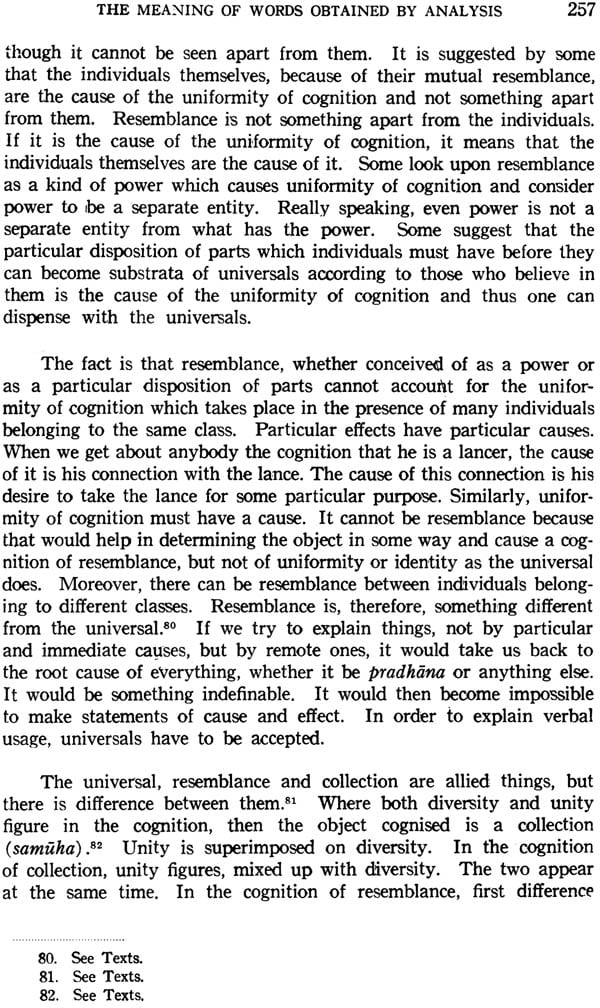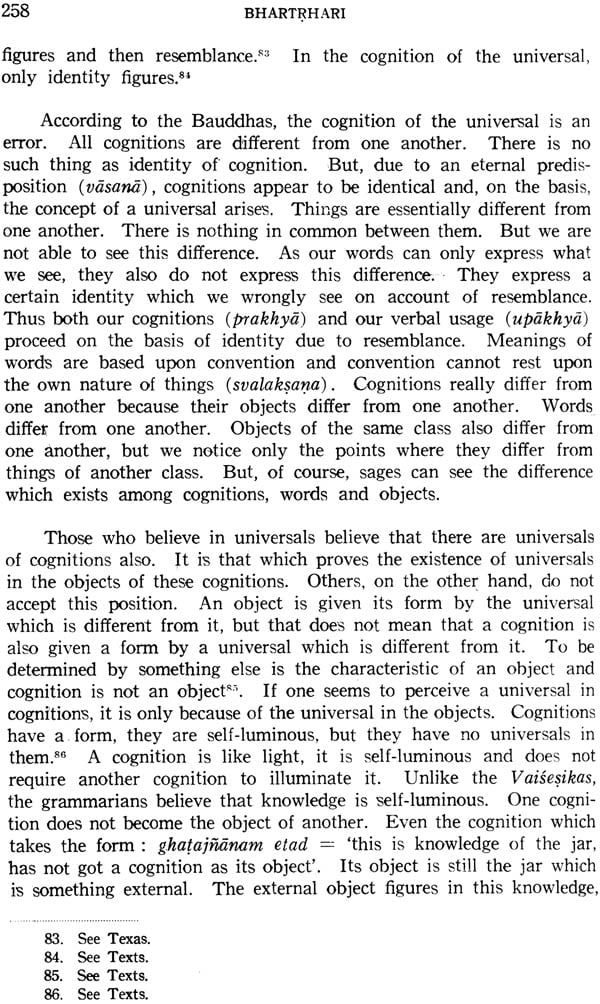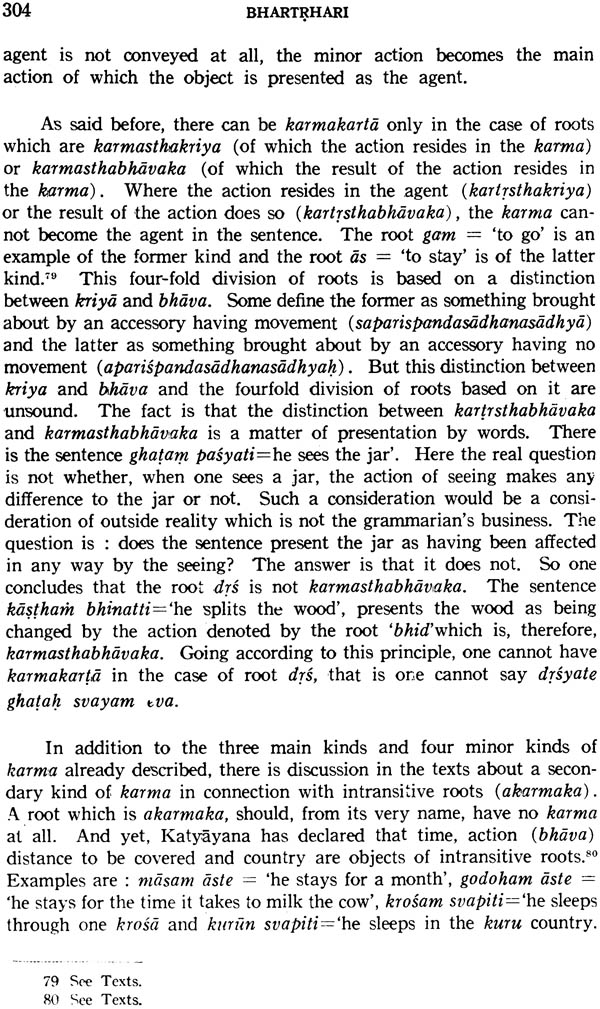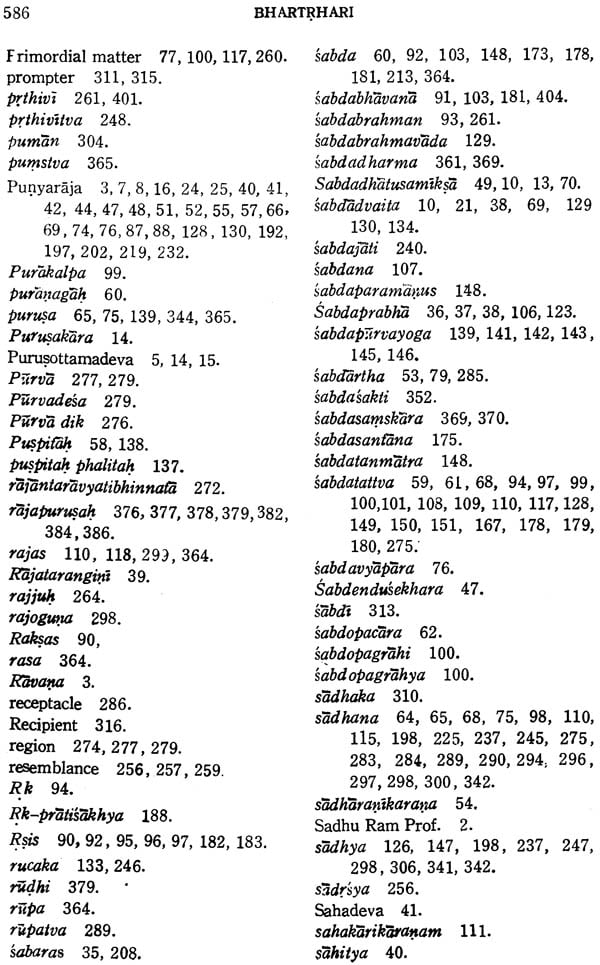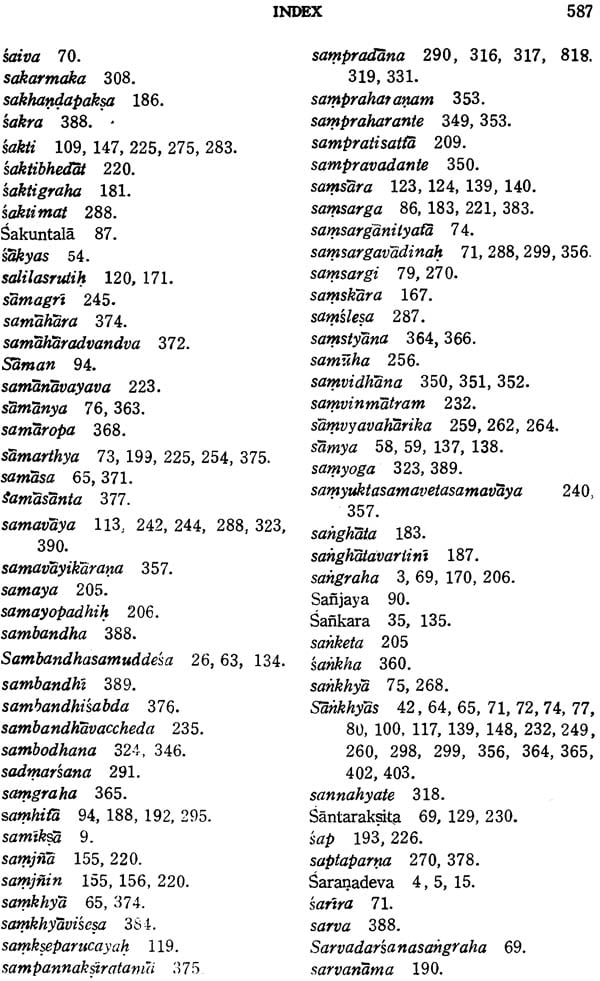
Bhartrhari (A Study of the Vakyapadiya in the Light of the Ancient Commentaries) - A Rare Book
Book Specification
| Item Code: | NAD201 |
| Author: | K.A. Subramania Iyer |
| Publisher: | Deccan College Postgraduate and Research Institute |
| Edition: | 1992 |
| Pages: | 597 |
| Cover: | Paperback |
| Other Details | 9.2 inch X 7.2 inch |
| Weight | 1.18 kg |
Book Description
On the 15th of October 1964 the Deccan College celebrates the centenary of its main Building, and curiously enough this period coincides with the Silver Jubilee of the Postgraduate and Research Institute which, as successor to the Deccan College started functioning from 17th August 1939 when members of the teaching faculty reported on duty. When I suggested to members of our faculty the novel idea that the centenary should be celebrated by the publication of a hundred monographs representing the research carried on under the auspices of the Deccan College in its several departments they readily accepted the suggestion. These contributions are from present and past faculty members and research scholars of the Deccan College, giving a cross-section of the manifold research that it has sponsored during the past twenty-five years. From small beginnings in 1939 the Deccan College has now grown into a well developed and developing Research Institute and become a national centre in so far as Linguistics, Archaeology and Ancient Indian History, and Anthropology and Sociology are concerned. Its international status is attested by the location of the Indian Institute of German Studies (jointly sponsored by Deccan College and the Goethe Institute of Munich), the American Institute of Indian Studies and a branch of the Ecole Francaise d’Extreme-Orient in the campus of the Deccan College. The century of monographs not only symbolises the centenary of the original building and the silver jubilee of the Research Institute, but also the new spirit of critical enquiry and the promise of more to come.
I had at first the idea of discussing in the Introduction to each volume, as it came out, of my critical edition of the Vakyapadya of Bharthari with the ancient commentaries, the ideas expounded by Bharthari in that particular volume. Later it seemed that, as there is a unity of ideas in the three Kandas of the Vakyapadiya, it would be better to present these ideas in a separate volume which could serve as an Introduction to all the four volumes of the critical edition. I had announced this on p. xv of my Introduction to Kanda III, pt. i (D.C.M.S., 21, 1963). In my Introduction to Vakyapadiya, kanda I, p. xviii also, I had announced that a separate volume, dealing with some of the problems relating to the text and the ideas expounded in the work would be published in due course. The present work is meant to be a fulfilment of that announcement.
The Vakyapadiya has aroused a great deal of interest in recent times among scholars both in India and abroad. Papers relating to the grammarian Bhartrhari and to his Vãkyapadiya are being published in journals devoted to Sanskrit and Indology in India, Europe, America and Japan. I have discussed some of these publications in the section entitled ‘Problems of Interpretation’ and have indicated what exactly I have tried to do in this work. To put it briefly, an attempt has been made in this work, after giving a brief account of the problems relating to the text of Bhartrhari’s work, including his commentary on the Mahabhasya of Patanjali and to the commentaries on the Vãkyapadiya, to expound briefly the philosophical ideas and the notions pertaining to General Linguistics and those underlying the forms of the Sanskrit language, found mainly in the Vãkyapadiya and to a certain extent, in the commentary on the Mahabhasya. As the whole of even the available fragment of the latter work has not yet been published, it has not been possible to bring out all the linguistic notions lying embedded in it. But I have taken note of some of the notions found in the published portion and they are found to confirm what one can gather from the Vakyapadiya. The present work is chiefly a study of the Vakyapadiya on the basis of the four available ancient conmientaries. It does not claim to expound everything that the Vakyapadiya contains. It deals only with the basic notions found in its three kãn4as. The last section of the third kãz4a, the one relating to complex formations (Vrtti) is particularly rich in linguistic notions and some of them have been briefly explained here. The rest have not been dealt with, not only because they have been left for later treatment elsewhere, but also because some of them pertain particularly to the Sanskrit language whereas I have been anxious to bring out those notions like that of sphota which concern language in general and not any particular language. The reason is that I look upon Bhartrhari as one who has, in a philosophical background, made a contribution to General Linguistics. He may be said to have given a definite shape to the contribution of ancient India to General Linguistics, though his ideas go back to Patanjali in the grammatical and linguistic tradition and to the Vedas themselves as far as the philosophical side is concerned. As I have indicated briefly what I have tried to do here in the section entitled ‘Problems of Interpretation’, it is not necessary to say anything more here.
It will be found that the references in the work to the Karikas of the first kJz4a of the Vakyapadiya have two numbers. The first one is their number in my critical edition published by the Deccan College and the second one within square brackets is their number in other editions such as those of Pt. Charu Deva Shastri and Pt. Raghunatha Sharma. The difference between these two numbers is eight because of my considering eight KJrik4s after the 107th in other editions to be quotations in the Vrtti and not as belonging to the Vakyapadiya itself. Both the numbers are given in order to facilitate reference.
It is now a pleasure to acknowledge the help which I have received from others in the course of publishing this work. I must, first of all, mention Pt. K. A. Sivaramakrishna Sastri, ästraratna, of the Dictionary Department, Deccan College. Because of his deep knowledge of Vyakarana and of his being at home in English, I showed him some portions of the work in manuscript, especially those relating to the ideas expounded in the third kãnda of the Vakyapadiya. He detected some slips and made suggestions for improvement in some places, which I have gladly adopted. I am very grateful to him for this help. Sri K L. Mankocli who was working as a research student under Dr. H. D. Sankalia in the Deccan College, translated for me into English an article in Gujarati by Muni Jambuvijayaji on ‘Jam Acharya MallavAdin and the date of Bhartrhari’.. I thank him heartily for it. The laborious task of preparing the Index was kindly done by Sri S. B. Kulkarni, of the Marathi Dialect Survey Department, Deccan College, under the able supervision of Professor A. M. Ghatage. The excellence of it will, I am sure, be appreciated by all readers whose gratitude will naturally go to them. I offer my thanks also to Padmabhushan Professor V. Raghavan, Jawaharlal New Fellow, for lending me for perusal a typewritten copy of Sri V. Swaminathan’s Introduction to his edition of Bhartrhari’s commentary on the MaMbhaya. My thanks are also due to Pandit Raghunath Sharma, Retired Professor of the Varanasi Sanskrit University for showing me in manuscript some portions of his commentary Anbãkartri on the second Kãzç1a of the Vakyapadiya and to the staff of the Sanskrit University and to Pt. Vraj Vallabh Dvivedi, Lecturer of the said University in particular, for forwarding to me the printed forms of this commentary as they gradually came out of the press. This has been of great help to me in understanding the second Kãnda of the Vakyapadiya. The greatest help which I received was from: the authorities of the Centre of Advanced Study in Linguistics, Deccan College, beginning with Dr. S. M. Katre, the Director, who, by inviting me as Visiting Professor for short periods during four years in succession, enabled me to take advantage of the excellent library facilities of the Deccan College and of the presence there of different types of scholars. In fact, some portions of the present work were placed before scholars in the form of lectures at the Centre of Advanced Study in Linguistics. I am deeply grateful to Dr. S. M. Katre and his colleagues at the Centre for this invaluable help.
| Foreword | ||
| Preface | ||
| Chapter I. | ||
| 1 | Bharthari and his works | 1 |
| 2 | The commentaries on the Vakyapadiya | 16-45 |
| (a) The Vrtti | 16 | |
| (b) The Prakasa of HelärAja | 36 | |
| (c) The commentary of Punyaraja | 40 | |
| (d) The Paddhati of Vrsabhadeva | 44 | |
| Chapter II | ||
| 1 | Problems of Interpretation | 46 |
| 2 | The contents of the Vãkyapadiya | 56 |
| 3 | Bharthari and the Darsanas | 69 |
| 4 | Bhártrhari and the Pramanas | 83 |
| Chapter III | ||
| 1 | The Metaphysical Background of the Vakyapadiya | 98 |
| 2 | The doctrine of Sphota | 147 |
| 3 | Bhartrhari on the Sentence | 181 |
| 4 | The relation between the Word and the Meaning | 204 |
| Chapter IV | ||
| 1 | Bharthari on grammatical analysis | 219 |
| 2 | The meanings obtained by analysis: the Universal and the Substance.. | 228 |
| 3 | On Quality (Guza) | 264 |
| 4 | On Direction (Dik) | 274 |
| 5 | On the Means (Sadhana) | 283-325 |
| (a) The object (Karma) | 300 | |
| (b) The Instrument (Karana) | 309 | |
| (c) The Agent and the Prompter (Kartã, hetu) | 311 | |
| d) The Recipient (Sampradana) | 316 | |
| (e) The Starting-point (Apadana) | 320 | |
| (f) The Abode (Adhikauma) | 322 | |
| (g) sesa and Sambodhana | 324 | |
| 6 | On Action (Kriyã) | 326 |
| 7 | On Person and Aspect(purusa and upagraha) | 344 |
| 8 | On Number (Sañkhyã) | 354 |
| 9 | On Gender (Liñga) | 359 |
| 10 | On Complex Formation (Vrtti) | 371-401 |
| (a) Dvandva and Ekaesa | 371 | |
| (b) The compound (samãsa) and the sentence (vakya) | 375 | |
| (c) On the relation of the qualifier and the qualified (visesana—viesyabhãva) in a complex formation | 380 | |
| (d) On the nature of Vrtti | 382 | |
| (e) On the number expressed by the secondary word in a compound(.abhedaikatvasankhya) | 384 | |
| (f) On the possessive compound(bahuvrihi) | 387 | |
| (g) On the negative compound (nañ-samãsa) | 390 | |
| Conclusion | 402 | |
| Texts | 405-562 | |
| Abbreviations | 563 | |
| Bibliography | 565 | |
| Index | 575 | |
| 593 |

